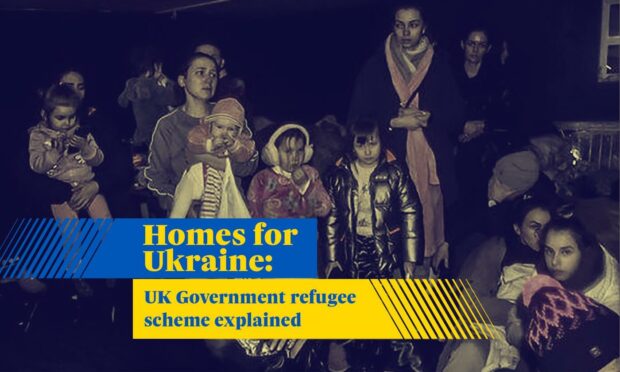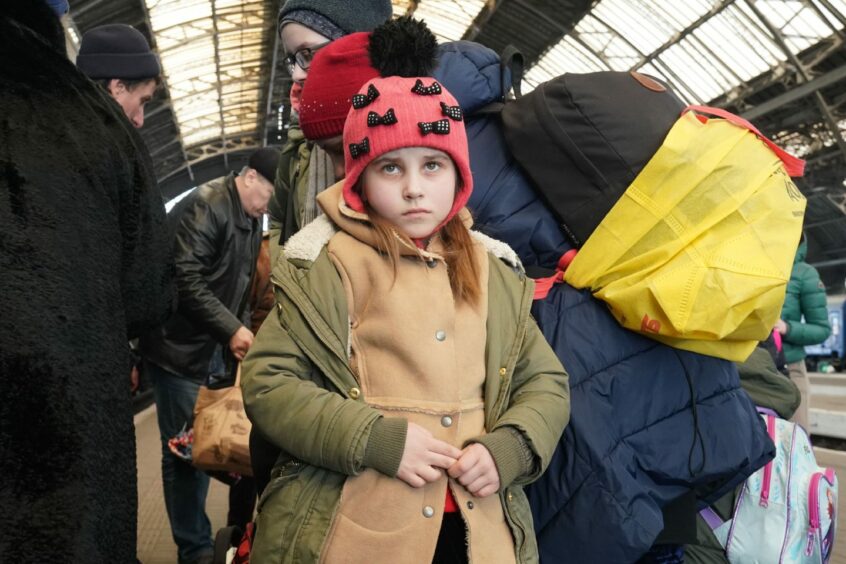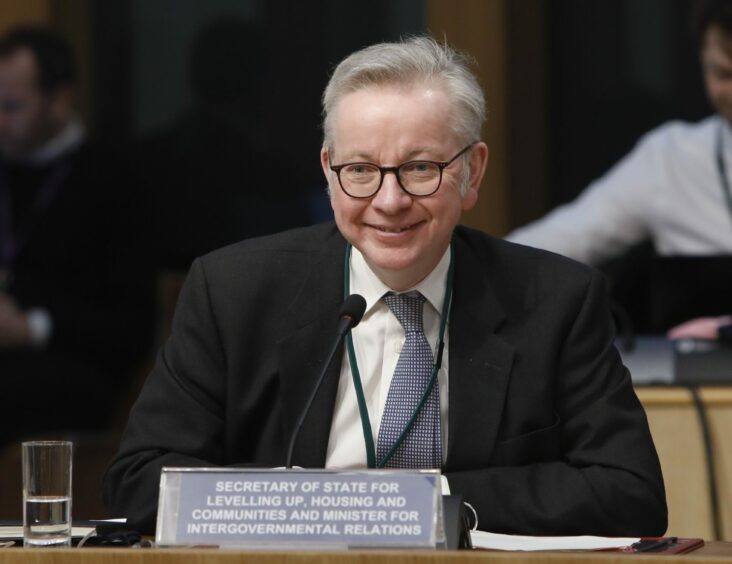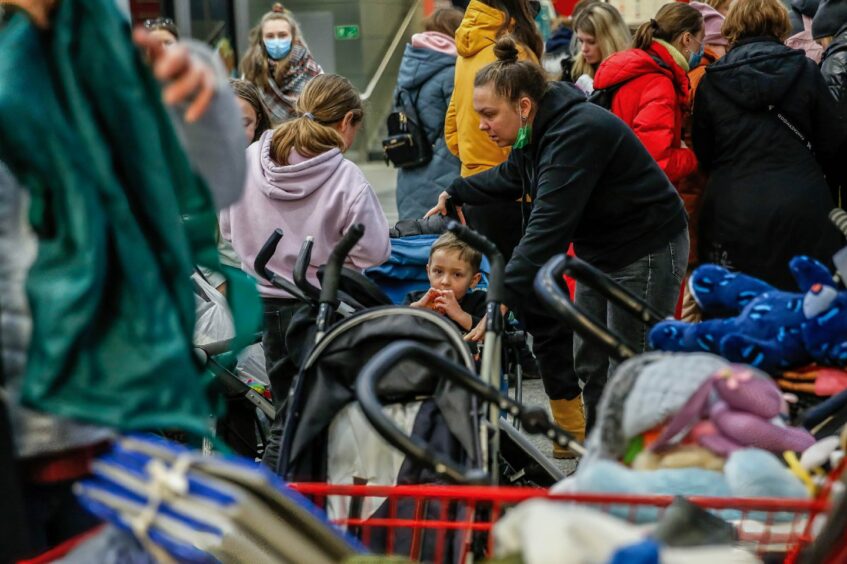It is hoped tens of thousands of people displaced from Ukraine will be able to find refuge in homes across the UK.
On March 14, the UK Government’s Homes for Ukraine scheme was launched, allowing people to sponsor Ukrainian refugees to come and stay with them.
The first refugees to use this new route are expected to arrive in the UK within a week – but for those who want to offer up their homes, how does the scheme work?
What is the Homes for Ukraine scheme?
The Homes for Ukraine scheme will allow individuals, charities, community groups and businesses to bring people escaping the war over to the UK, even if they have no previous ties here.
Anyone with a spare room or empty property can sign up and offer shelter for Ukrainian refugees.
How many refugees will come?
Currently, there is no cap on how many refugees can come to the UK from the Homes for Ukraine scheme.
So far around 4,000 UK visas have been issued to Ukrainians, with “tens of thousands” more expected to be provided.
More than 2.5 million people have fled Ukraine since Vladimir Putin’s invasion – the UN is calling it the fastest-growing refugee crisis since World War Two.
How long will the refugees be housed for?
It is expected those who take in refugees will have them stay for six months, although people are being encouraged to offer shelter for longer if they can.
Sponsored Ukrainians will then be granted three years leave to remain in the UK and will be allowed to work and access public services such as healthcare and benefits.
A number of employers have already said they will offer employment to Ukrainian refugees, including Sainsbury’s, Marks & Spencer, Morrisons, Asos and Lush.
Will there be any security checks?
Yes – members of the public who do offer up a room will be vetted, and those with a criminal record will not be able to apply.
Likewise applicants from Ukraine will need to undergo a security check.
The exact details are not yet known but Levelling Up Secretary Michael Gove says steps will be taken to ensure people who might be “intent on exploitation” are prevented from “abusing” the new scheme.
How do you apply?
An online portal was launched by the UK Government on March 14.
Anyone who wants to register their interest can now do so on this online portal, where they will also be asked to give the first part of their postcode.
One hurdle facing anyone hoping to sponsor a refugee is that they will have to specifically name the Ukrainian they are hoping to take in.
📣NEW – UK individuals, charities, community groups & businesses can now record their interest in supporting Ukrainians fleeing the war through our new Homes for Ukraine scheme.
Express an interest in becoming a sponsor now ➡ https://t.co/Tnh1cpJEle#StandWithUkraine 🇺🇦🇬🇧 pic.twitter.com/vbbINAz3XP
— Department for Levelling Up, Housing & Communities (@luhc) March 14, 2022
The UK Government says asking for names is the quickest way of getting Ukrainians to the UK, adding that waiting for the government to match refugees with people would be time-intensive and burdensome.
If you already have a named person you wish to sponsor, you can both fill in a visa application form when this goes live on Friday 18 March.
If you don’t, the UK Government suggests people get in touch with local charities, faith groups and community organisations who can help make these connections.
Can you specify what your requirements are?
When registering, you can specify whether you are able to take in a single adult, more than one adult, or adults with children.
You can also say whether you are able to offer a spare room or an entire empty property, as well as how many single and double bedrooms you have available.
The form also asks if there is step-free access to the property.
It is not yet clear if you are able to specify other requirements, such as whether or not you have children or pets, or if you work from home.
Will hosts be supported?
Yes – those who offer up a spare room or property will be given £350 a month as a “thank you” and to help cover the costs of housing refugees, such as increased food and energy bills, however there is no obligation for hosts to provide meals.
The payment will be the same regardless of whether people take in one refugee or a whole family, and will be paid for up to a year.
Local authorities will also be entitled to more than £10,000 per Ukrainian refugee who comes through the Homes for Ukraine scheme.
Additional payments will also be made to local authorities to support school age children as well.
The UK Government will release details of what other kinds of support they will be offering in the coming days, and says hosts will be provided with a support pack.
What happens next?
Once you have registered your interest and been matched with a Ukrainian, you will need to fill out an online form.
The form needs to be filled in by both the sponsor and the Ukrainian refugee, who must have been resident in Ukraine before 1 January 2022.
Ukrainians who have a passport can then apply to come to the UK online, meaning they can avoid having to go to a visa application centre.
Once approved, they will be given an electronic permit to travel as a PDF, which can be scanned when they go to the airport (or any other travel route).
Who has already agreed to take in refugees?
An Opinium poll for The Observer suggests almost one in three Brits will invite a Ukrainian refugee to live with them.
And a number of high-profile celebrities and politicians have already said they will be applying to the Homes for Ukraine scheme.
Speaking on the red carpet before the Baftas ceremony at the Albert Hall in London, actor Benedict Cumberbatch said he will be applying.
Levelling Up Secretary Michael Gove has also agreed to take refugees in.
I strongly welcome the Government's Homes for Ukraine scheme
I will be signing up and opening my home to support our Ukrainian friends
I urge everyone who is able to help to register and welcome a family in desperate need
We must stand with Ukraine 🇬🇧🇺🇦
— Matt Hancock (@MattHancock) March 14, 2022
Matt Hancock has also announced he will be applying to the scheme.
Speaking at the launch of the scheme, Mr Gove said: “The courage shown by the Ukrainian people in the face of devastation caused by the invasion of their great country is nothing short of remarkable.
“The United Kingdom has a long and proud history of helping others in their hour of need and our new Homes for Ukraine scheme offers a lifeline to those who have been forced to flee.
“I’m asking people across our country who can provide a home for Ukrainians to consider being sponsors.”




